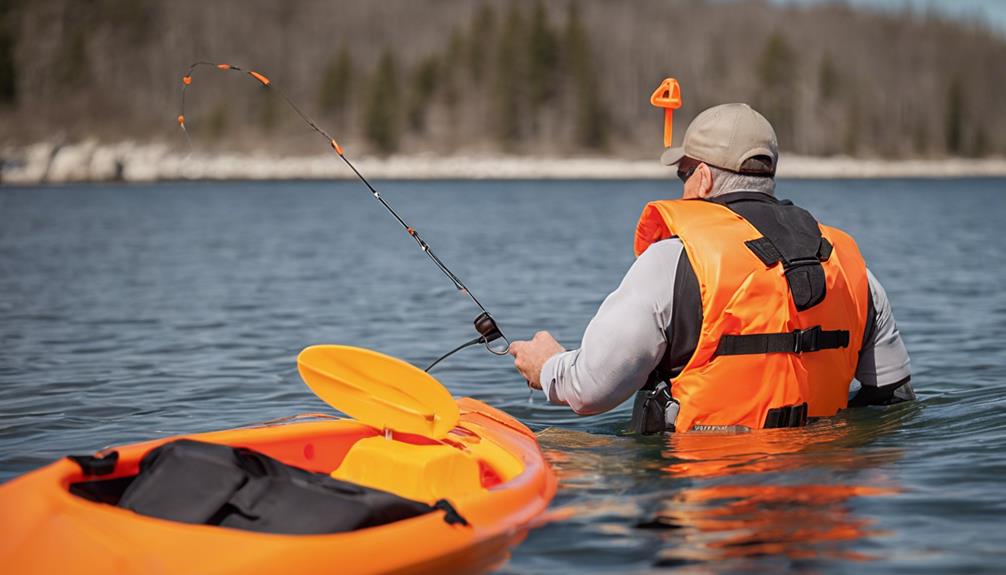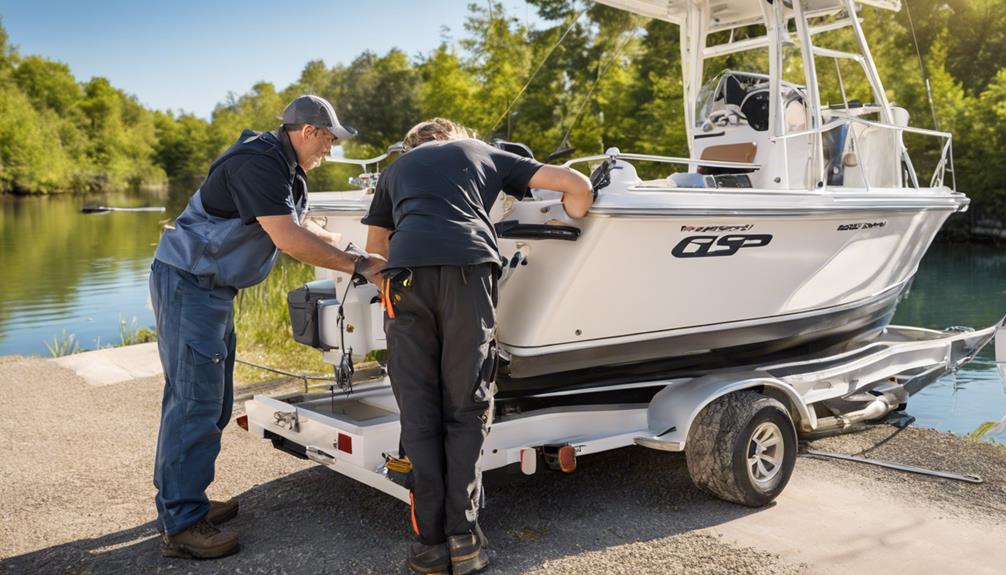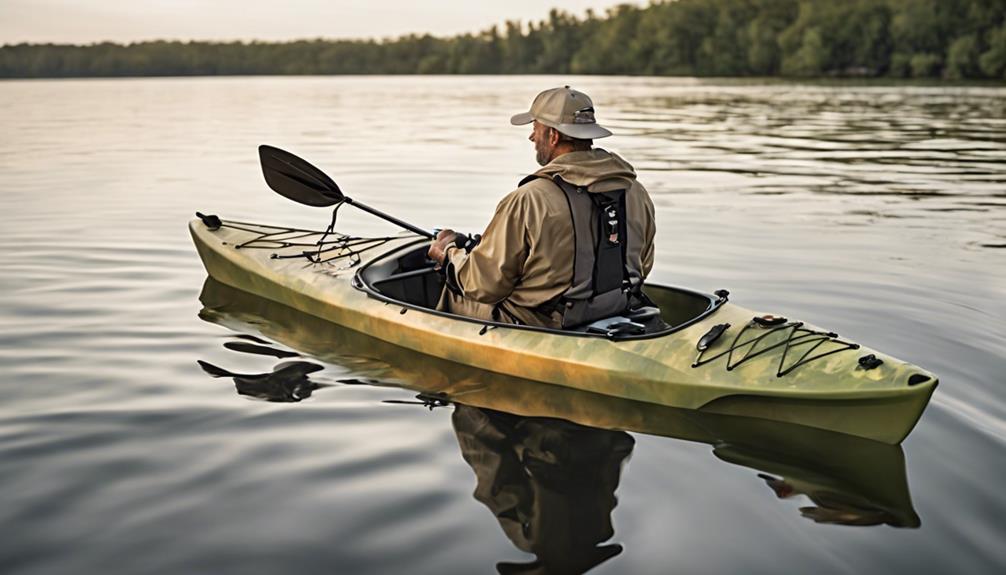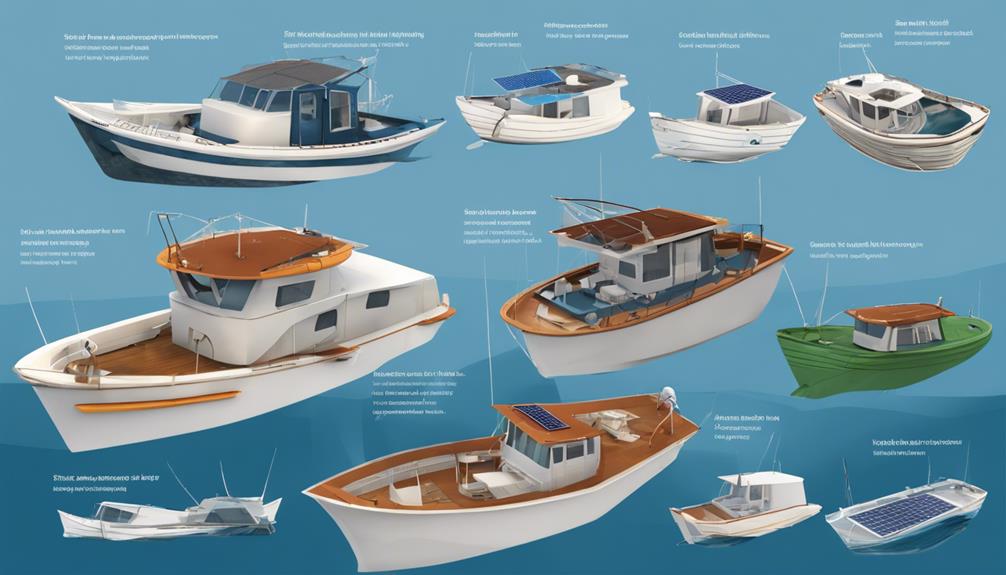When it comes to kayak fishing, you may have heard about the importance of certain gear, but do you truly know which items are essential for a successful outing on the water? Imagine being equipped with the top 4 must-have tools that can enhance your kayak fishing experience and make your trips more productive.
From the right kayak selection to crucial safety equipment, these items can significantly impact your time spent on the water. But which gear specifically should you prioritize to elevate your kayak fishing game?
Kayak Selection
When choosing a kayak for fishing, prioritize stability and maneuverability over speed. Kayak stability is crucial for fishing as it provides a steady platform for casting lines and reeling in fish. Look for kayaks with a wider hull design, as they tend to offer better stability on the water. Additionally, consider the weight capacity of the kayak to ensure it can support you, your gear, and any fish you catch without compromising stability.
Weight capacity is an essential factor to consider when selecting a fishing kayak. Exceeding the weight capacity can lead to decreased stability and potentially dangerous situations on the water. Make sure to account for your weight, the weight of your fishing gear, coolers, and any other items you plan to bring along. Choosing a kayak with a weight capacity that comfortably accommodates all your essentials will enhance your overall fishing experience.
When assessing kayak stability, pay attention to features such as the width of the kayak, the design of the hull, and the presence of features like outriggers or stabilizers. These elements can significantly impact how stable the kayak feels on the water. By prioritizing stability and considering the weight capacity of the kayak, you can select a reliable vessel that meets your fishing needs effectively.
Paddle Choice
For an optimal kayak fishing experience, selecting the right paddle is crucial to maneuver efficiently on the water. Here are some key factors to consider when choosing the perfect paddle:
- Blade Material: The material of the paddle blade can significantly impact your performance. Fiberglass blades are lightweight and offer a good balance between stiffness and flexibility, making them ideal for long fishing trips. On the other hand, carbon fiber blades are extremely lightweight and provide excellent power transfer, perfect for quick maneuvers in tight spots.
- Grip Design: The grip of your paddle plays a vital role in comfort and control. Look for paddles with ergonomic grips that reduce hand fatigue and provide a secure hold, especially important during extended fishing sessions.
- Weight Distribution: Opt for a paddle with balanced weight distribution to reduce strain on your arms and shoulders. A well-balanced paddle will help you paddle efficiently without tiring quickly, allowing you to focus on reeling in that big catch.
- Paddle Length: Choosing the right paddle length is essential for maximizing your efficiency on the water. Ensure your paddle is the correct length based on your height and the width of your kayak to avoid unnecessary exertion and improve your overall paddling experience.
Fishing Rod Holders
Selecting the right fishing rod holders is essential for organizing your gear efficiently during your kayak fishing adventures. Rod mounting capabilities are crucial when choosing the perfect fishing rod holder for your kayak. Look for holders that securely keep your rods in place, preventing them from sliding around during your trip. This feature not only ensures the safety of your equipment but also allows for easy access when you need to grab your rod quickly.
When considering fishing rod holders, prioritize gear organization. Opt for holders that can accommodate multiple rods, enabling you to bring along different setups for various fishing conditions. Having your rods neatly stored and within reach enhances your overall fishing experience by saving you time and hassle while out on the water. Additionally, look for holders that can be easily installed and adjusted on your kayak, providing flexibility based on your preferences and fishing style.
Efficient rod holders contribute to a clutter-free kayak, giving you more space to move around comfortably. By keeping your rods secure and well-organized, you can focus on fishing without worrying about tangled lines or misplaced gear. Investing in quality fishing rod holders is a simple yet effective way to elevate your kayak fishing trips and ensure a smooth and enjoyable outing every time.
Personal Flotation Device
To ensure your safety on the water, prioritize wearing a personal flotation device during your kayak fishing adventures. It's essential to understand the importance of this gear to keep you safe while on the water.
- Proper Fit: Ensure your personal flotation device fits snugly to prevent it from riding up when in the water.
- Styles: Choose from a variety of styles such as inflatable, foam, or hybrid options to suit your preferences.
- Buoyancy: Look for a device with adequate buoyancy to keep you afloat in case of an emergency.
- Comfort: Opt for a comfortable design that allows you to move freely without restricting your movements.
When selecting a personal flotation device, consider the regulations in your area, and choose one with must-have features like adjustability and enhancing visibility. Remember to regularly maintain your device to ensure it functions correctly when needed.
Additionally, explore storage solutions that allow you to keep your personal flotation device easily accessible yet secure. Before heading out, test your device for proper function to guarantee it will support you in case of an accidental tip-over.
Stay safe on the water by always wearing your personal flotation device.
Tackle Storage Solutions
Looking for efficient ways to organize your fishing gear while kayaking? Tackle storage solutions are essential for keeping your gear secure and easily accessible on the water. Waterproof bags are a must-have for kayak fishing to protect your tackle from getting wet. Investing in quality waterproof bags will ensure that your gear stays dry even in the splashiest conditions. These bags come in various sizes and styles, providing you with ample options for organization.
Rod holders are another key component of tackle storage solutions. They offer convenience by keeping your rods secure while paddling or changing lures. Rod holders can be attached to different parts of your kayak, allowing you to customize their placement based on your preference. Having your rods within easy reach not only saves space on your kayak but also reduces the risk of accidents or tangles.
When it comes to organization, having a designated space for each piece of tackle can save you time and frustration on the water. Utilize tackle trays or boxes to sort and store your lures, hooks, and weights systematically. This organization system not only helps you locate your gear quickly but also prevents clutter on your kayak, giving you more space to move around comfortably. By investing in waterproof bags and rod holders, you can ensure that your tackle storage solutions enhance your kayak fishing experience.
Anchor System
Consider incorporating a reliable anchor system into your kayak fishing gear for better stability and control on the water. Here are some essential tips to make the most out of your anchor system:
- Anchor Maintenance: Regularly check your anchor system for any signs of wear and tear. Make sure all parts are functioning correctly to avoid any mishaps while out on the water.
- Storage Solutions: When not in use, properly store your anchor system to prevent damage and ensure longevity. Consider investing in a storage bag or compartment on your kayak to keep it secure and easily accessible when needed.
- Drift Sock: A drift sock, also known as a drift anchor, can be a useful addition to your anchor system. It helps control the speed and direction of your kayak when fishing in windy or fast-flowing waters.
- Drift Anchor: Similar to a drift sock, a drift anchor can provide additional stability in varying water conditions. It's particularly handy when you need to slow down your drift or stay in a specific spot for casting.
Safety Whistle

Make sure to have a safety whistle on hand while kayak fishing for emergencies and signaling purposes. A safety whistle is a crucial tool that serves as an emergency signaling and communication device when out on the water. In case of an emergency or if you need to grab someone's attention quickly, a safety whistle can be more effective than shouting due to its piercing sound that can travel long distances over water.
When kayak fishing, unforeseen situations can arise, such as getting separated from your group, encountering severe weather conditions, or needing assistance. In these instances, a safety whistle can be a lifesaver. It can help you signal for help, alert others to your location, or communicate with nearby boats or shore personnel when in need of assistance.
Having a safety whistle easily accessible on your person, preferably attached to your life jacket, ensures that you can quickly reach for it in case of an emergency. Remember, in urgent situations, every second counts, and having a reliable signaling device like a safety whistle can make a significant difference in getting the help you need promptly.
Before heading out for a kayak fishing trip, always check that your safety whistle is in good working condition and test it to familiarize yourself with its sound and operation. Your safety should be a top priority, and a safety whistle is a simple yet essential tool that can greatly enhance your safety and peace of mind on the water.
First Aid Kit
Having a well-stocked first aid kit is essential for ensuring your safety while kayak fishing. Here are some key first aid essentials and emergency response techniques you should consider:
- Bandages and Dressings: Pack a variety of adhesive bandages, sterile gauze pads, and adhesive tape to dress any wounds or cuts you may sustain while fishing. Clean the wound thoroughly with antiseptic wipes before applying a bandage to prevent infection.
- Pain Relievers: Include pain relievers such as ibuprofen or acetaminophen in your first aid kit to alleviate any minor aches or pains you might experience during your fishing trip. Be sure to follow the recommended dosage instructions.
- Antiseptic Ointment: Having antiseptic ointment like Neosporin can help prevent infections in case of cuts or scrapes. Apply a small amount to the affected area after cleaning it to promote healing.
- CPR Mask: In case of emergencies where CPR is required, having a CPR mask in your first aid kit can help protect both you and the person receiving aid. Familiarize yourself with CPR techniques and practice using the mask beforehand for effective emergency response.
Frequently Asked Questions
What Are the Best Types of Waterproof Storage Containers to Bring on a Kayak Fishing Trip?
When you're out on the water kayak fishing, having the right waterproof storage containers is key. Consider bringing waterproof phone cases and dry bags to keep your essentials safe and dry. These containers are great for storing items like your phone, wallet, keys, and snacks.
Additionally, tackle organization and rod holders can help keep your gear easily accessible and organized while you focus on reeling in the big one.
How Can I Properly Secure My Fishing Gear to Prevent It From Falling Into the Water?
To secure your fishing gear and prevent loss, attach leashes or tethers to each item. Make sure all gear is secured to your kayak with bungee cords or clips.
Distribute weight evenly to maintain kayak stability and avoid capsizing. Consider using gear tracks or mounts for better organization.
Always double-check the security of your gear before hitting the water to ensure a worry-free fishing trip.
Are There Any Specific Regulations or Permits Required for Kayak Fishing in Certain Areas?
When kayak fishing, it's crucial to research permit requirements and safety regulations in specific areas. These rules help protect the environment and ensure conservation efforts are upheld. Always check for any necessary permits before heading out on the water.
Adhering to these regulations not only keeps you safe but also helps preserve the natural beauty of the areas you're fishing in. Stay informed and fish responsibly!
What Types of Fish Finders or Depth Finders Are Recommended for Kayak Fishing?
When out on the water, choosing the right fishfinder, GPS combo is crucial for kayak fishing. Understanding sonar technology helps you locate fish and navigate effectively. Look for compact, portable units that are easy to install on your kayak.
Opt for models with clear displays and reliable depth readings. Investing in a quality fishfinder can greatly enhance your fishing experience and increase your chances of success on the water.
How Can I Effectively Transport My Kayak to and From the Water Without Damaging It or My Vehicle?
When you're looking to transport your kayak without causing any damage, consider using kayak roof racks or kayak carts. Roof racks are great for securing your kayak on top of your vehicle, while carts help you easily move your kayak from your car to the water.
Make sure to also brush up on your kayak paddling techniques and have the necessary kayak safety gear to ensure a smooth and safe journey.
Conclusion
Overall, having the right gear is essential for a successful kayak fishing trip. From choosing the right kayak and paddle, to having the necessary safety equipment like a personal flotation device and first aid kit, being prepared can make all the difference.
With the right gear in hand, you can focus on enjoying the experience and reeling in some big catches. Happy fishing!



